Menus
- Exit with the first and last single-cylinder Tenere
- Old single cylinder is kicked
- "I don’t even want to know how difficult this thing is"
- Above 100 km / h, the new one is ahead of the old
- Slopes in the jungle of curves
- The appearance has changed, the inner values have remained
- Single-cylinder Tenere history
- Technical specifications
- The Yamaha Tenere cult
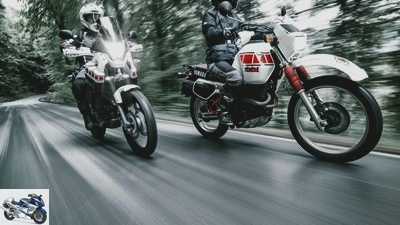
Artist
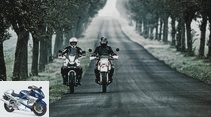
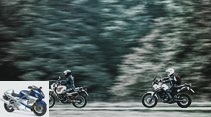
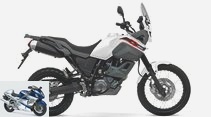
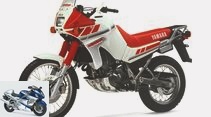
34 photos

Artist
1/34
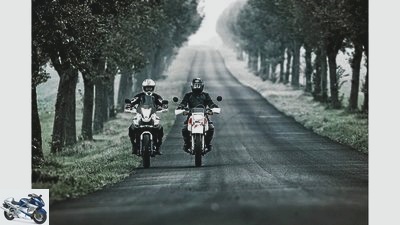
Artist
2/34
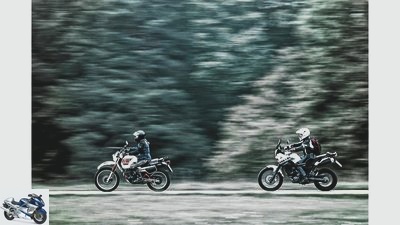
Artist
3/34
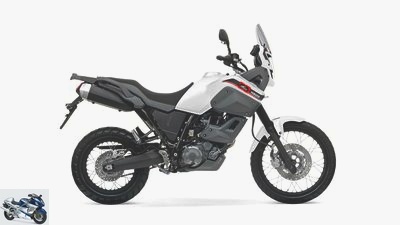
Yamaha
4/34
2008-2013: XT 660 Z.
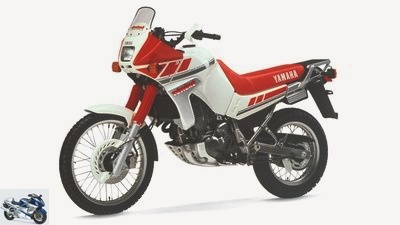
5/34
1991-1998: XTZ 660.
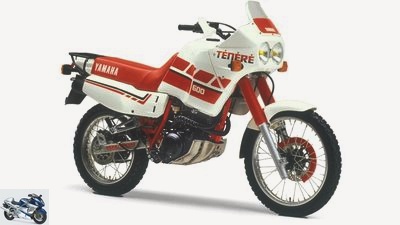
6/34
1988-1990: 3AJ.
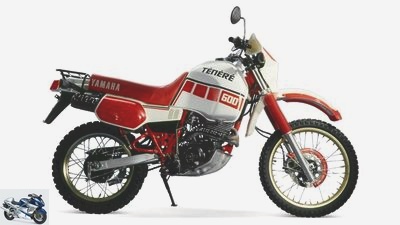
7/34
1986-1987: 1VJ.
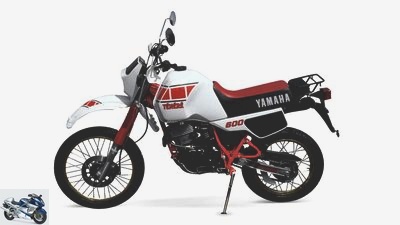
8/34
1983-1985: XT 600 Z.

Artist
9/34
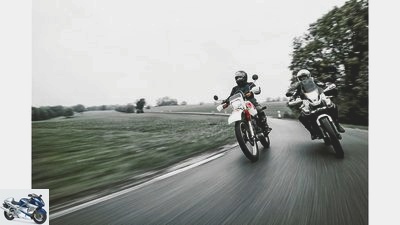
Artist
10/34
“It is not little time that we have, but a lot of time that we do not use,” Lucius Annaeus Seneca.
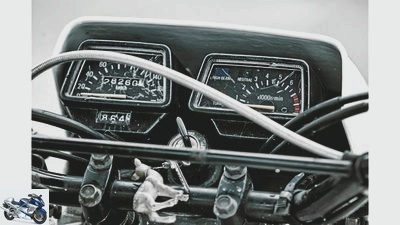
Artist
11/34
This brake line! Always in the way! Or the tachometer needle – twitches like a drug …
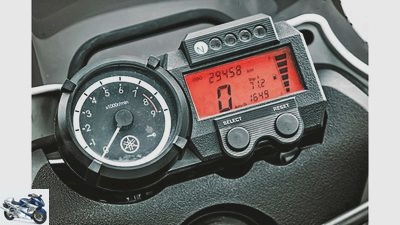
Artist
12/34
… Everything is much tidier with the new one.
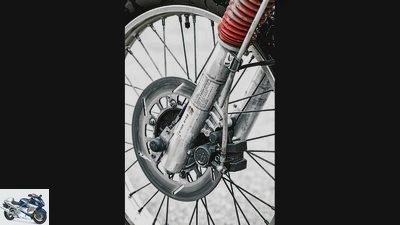
Artist
13/34
Well, that one record was great back then …
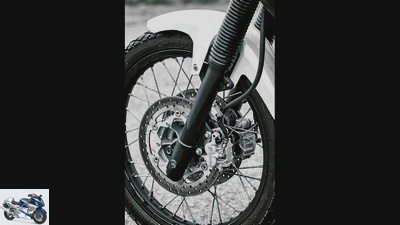
Artist
14/34
… But: the legend unfortunately looks pretty old compared to the modern double pane.
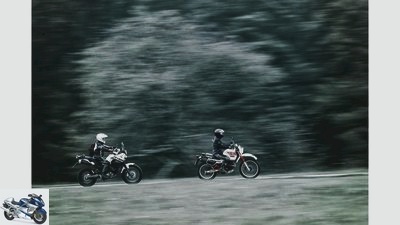
Artist
15/34
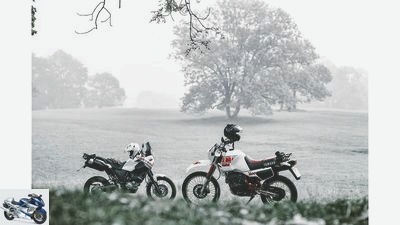
Artist
16/34
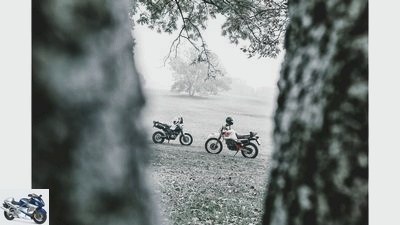
Artist
17/34
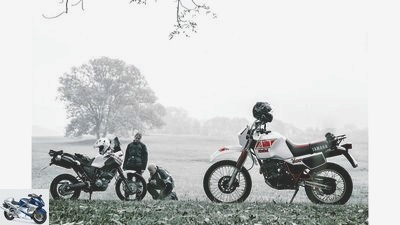
Artist
18/34
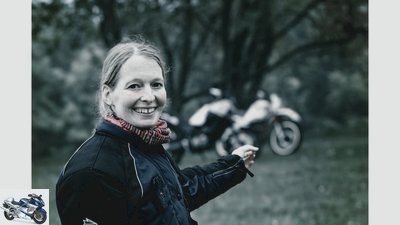
Artist
19/34
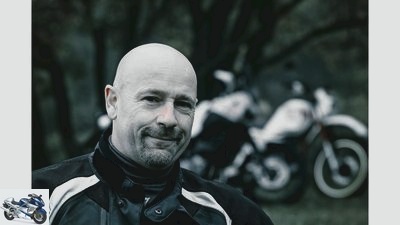
Artist
20/34
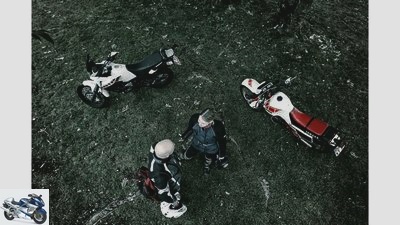
Artist
21/34
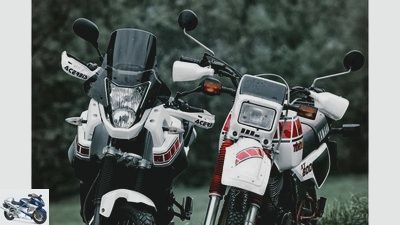
Artist
22/34
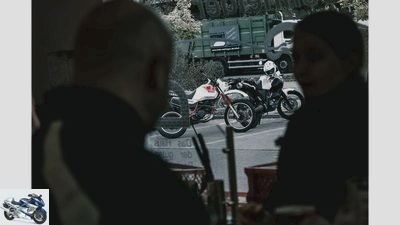
Artist
23/34
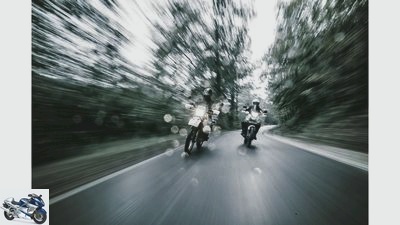
Artist
24/34
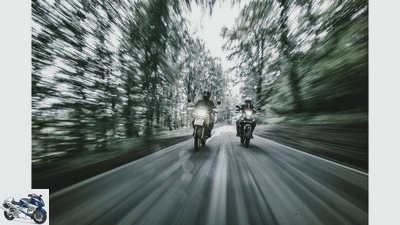
Artist
25/34
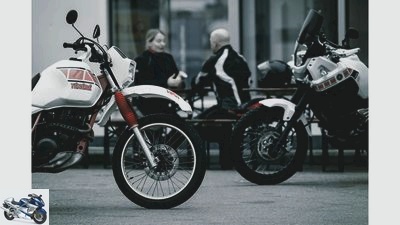
Artist
26/34
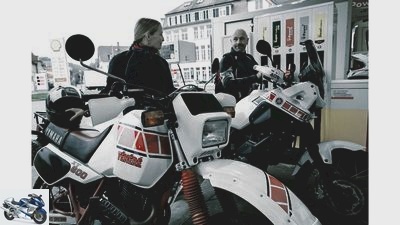
Artist
27/34
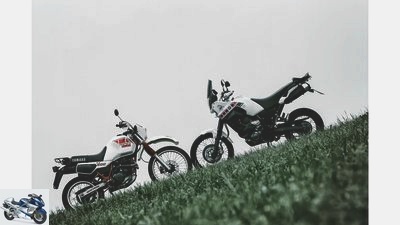
Artist
28/34
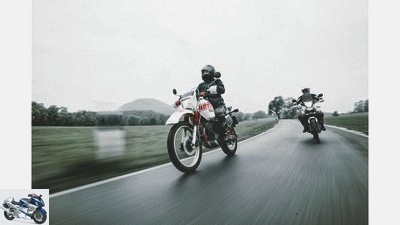
Artist
29/34
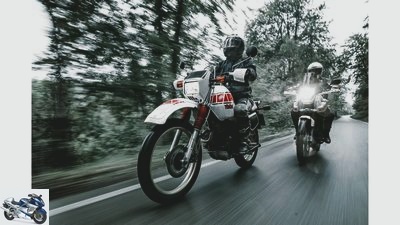
Artist
30/34
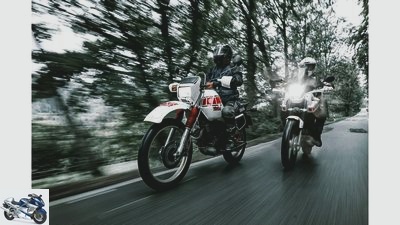
Artist
31/34
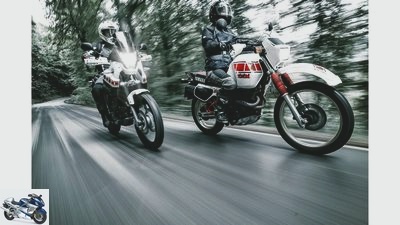
Artist
32/34
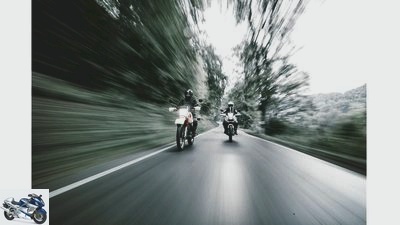
Artist
33/34
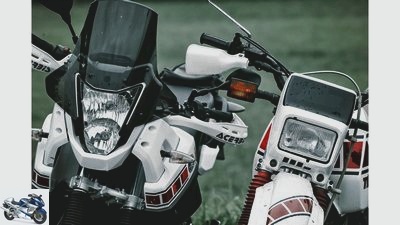
Artist
34/34
30 years of Yamaha Tenere
Exit with the first and last single-cylinder Tenere
Perhaps not everyone went to Africa on the Yamaha Tenere. But rather to Amsterdam. Or Alsfeld. No matter. Only one thing is and has always been important: You could have done with her. If you had wanted to …
E.t’s a story that was told for years around the campfires of globetrotters: an American traveled to Europe at the beginning of the 1970s, bought a BMW and wanted to travel to all the places in the world where no other motorcyclist had ever been. His trip lasted for several years. It’s been a very frustrating ride. Because every time the American arrived at the supposedly loneliest of the lonely points after steep scree slopes, deepest muddy grooves or mountainous trails, a few XT 500 drivers were crouching by the campfire and waving to him.
Buy complete article
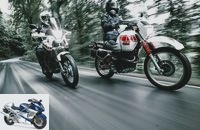
30 years of Yamaha Tenere
Exit with the first and last single-cylinder Tenere
Steam hammer bike with huge suspension travel
And the likelihood of meeting even more XT riders in the most remote parts of the world increased dramatically when Yamaha presented the Tenere in 1983: a steam hammer bike with huge suspension travel for the time and a range that only real rally motorcycles could provide. With the Yamaha XT 600 Tenere, Yamaha shocked the competition. Almost everyone who dreamed of long motorcycle journeys at this time pressed their noses flat against the dealers’ shop windows.
Unfortunately, 30 years later this is no longer the case. With the current Yamaha XT 660 Z Tenere, Yamaha still offers a bike that could make crossing Africa child’s play, but unlike its ancestor, the single is a bit removed from superlatives. It has neither shockingly long suspension travel nor a sexy tank or even disproportionate performance. You could now compare numbers: Since their debut in 2008, Yamaha has sold around 1,300 current 660 Tenere in Germany. And let’s be realistic: The legendary Yamaha XT 600 Z Tenere 34L model from 1983 was only sold 1,495 times in Germany. Judging by its fame, that is comparatively little.
So what is it about myth and legend? To clarify this, MOTORRAD organized the first and last single-cylinder Tenere for the exit and put fans on it from the first minute: The author of these lines has a 34L with 243,000 kilometers on the clock in the hallway at home. And the rally driver Silke Wissing treats her Yamaha 34L as a full family member.
Artist
The adventure begins early in the morning at the foot of the Swabian Alb.
Meeting point at the petrol station, early in the morning, at the foot of the Swabian Alb. The fog hangs low, Silke has brought her own 34L, which has around 29,000 kilometers under its belt. That’s a good thing, because a used Yamaha XT 660 Z Tenere with almost identical mileage is available for the ride. “Man, is it high,” wonders Silke. She is right. Because the spring elements of her 30-year-old girl have given in significantly, if you take the 600 from the side stand, it visibly sags.
860 millimeters are still left of the seat height of 890 millimeters that was previously propagated. With the current Yamaha Tenere it is the other way around, here a higher accessory seat from Kahedo is mounted: 945 millimeters is the measure of the meter. We fill up both machines to the brim. The tank of the new one holds 23 liters. Where it begins or ends is hard to see because of the plastic casing. 28 liters fit in the tank of the 34L. We stand in front of it in silence, thinking the same thing: Never again has anyone packed gasoline so nicely …
Old single cylinder is kicked
While the new one goes to work with an e-starter, the old single cylinder has to be kicked off. That happens without any problems. The 30-year-old single usually thunders off after the first kick. And even without an insulating water jacket, it does not produce excessive mechanical noises. “29,000 kilometers – that is just about retracted,” says Silke. Even back then, double mileage was the order of the day without having to overhaul the engine.
"I don’t even want to know how difficult this thing is"
We pound our motorbikes over little-traveled secondary roads. The old darling sounds much better than the modern Yamaha Tenere. A short break also explains why: The ravages of time have gnawed at the db-Eater and added a few holes due to corrosion. “Can you remember the time when you said flute to that?” Asks Silke and examines the mighty muffler of the current 660s. Well hidden under the bench, with two tubes, it takes up a lot of space. “I don’t even want to know how heavy this thing is,” says Silke and looks at her 34L.
No, you don’t want to know. On the other hand, features like this one explain the extreme weight increase: At 168 kilograms, the old 600 seems almost anorexic compared to the new 660, because it weighs 215 kilograms. “One wonders how she was able to put on these 47 kilos,” says Silke, patting the massive towing eye on the lower fork bridge with her hand and grinning. Yes, the towing eye. A mystery. What is it for? So that you can tow the Yamaha Tenere better? Doesn’t stay where it is anyway. To fix the Tenere somewhere in Africa, Australia, South America or anywhere else with a lock?
Yamaha
The current Tenere is for those who really want to travel around the world.
The eyelet can be unscrewed. At the presentation of the 660 it was allegedly stated that it was there so that the machine could be loaded onto a ship by crane. Well. But when does that happen? And so they line up, the details that explain the extra weight: fairing, crash bar, front mask, silencer, swing arm, shock absorber with expansion tank, double disc brake … Everything is a bit more massive. And that’s not a disadvantage. Because this makes the load capacity on the 660 quite opulent – 221 kilograms can be packed on it.
For comparison: the bestseller BMW R 1200 GS can only pack 196 kg on top. And, bad faux pas: If you believe the information in the Yamaha brochure from 1983, then the legendary mother of all Teneres can only weigh 316 kilos fully packed. Load capacity: a ridiculous 148 kg. At least that would explain why it was only available with a single bench at first. This figure was revised in 1984 and the value increased to a permissible total weight of 355 kilos.
Above 100 km / h, the new one is ahead of the old
On the road again. If you only compare bare numbers and values, you might come to the following equation: 44 HP have to move 168 kg, and 48 HP have to struggle with 215 kg. But no effort is noticeable when driving. On the contrary. The new one is ahead of the old, especially above 100 km / h. The 660 single is stronger, hangs better on the gas and looks beefy. And that although he has to move more mass.
The difference in seating position is even more dramatic. Anyone who descends from the 660 to the 600 believes that they are sitting on a mokick. Everything is more dreamy, more inactive, softer, more casual. Starting with the soft seat upholstery, over the curvature of the tubular steel handlebar, over the narrow knee angle to the cockpit. The brake hose has been stretched over its instruments since the very beginning and partially covered it. “What a difference!” Says Silke, who has already won the Tuareg rally three times with her converted WR 250. “The 660 has a lot more rally flair.” This also has to do with the fact that the new model has a kind of rally stem as standard and the high seat and a different cranked handlebar plus handlebar riser are also fitted.
Slopes in the jungle of curves
We change the machines every 30 kilometers. Stripes over winding country roads, robbing dirt roads and enjoying the slopes in the jungle of curves. Ultimately, you can’t avoid attesting to the newcomer that she can really do everything better. Your seat offers a better overview, the stiff chassis more reserves, the front double disc brake is a stunner, and the engine looks almost as tractor-like at low speeds as its 600 counterpart, but can pack more in the middle and in the upper area.
So we crouch on the bank of a small river, look at the bikes and philosophize. Silke misses golden rims on the 660. And is deeply in love with the classic design of her baby: “I think it’s a shame that the turn signals still look modest after 30 years of development,” she grumbles.
The appearance has changed, the inner values have remained
Yes, you can really argue about the look. Less about inner values. In addition, the Tenere is and has always been about something that has significantly influenced its success and the creation of legends: longing. Today like 30 years ago you are standing
next to this motorcycle and can literally feel the aura of the wide world. Hardly in the saddle, Aachen seems as adventurous as Africa, and the sandy soil of the Brandenburg region could also be considered the Sahel zone. The spring travel is still long enough to
to stand up to the slopes of Central Africa. And the theoretical range of 530 kilometers for the new one and 590 kilometers for the old one is still huge.
With a consumption of 4.3 liters / 100 km, the 660 is even a little more economical than the original Tenere, despite the additional weight and greater power. In addition, you have to search for a long time to find stages today that are becoming a problem for these Tenere models. Strictly speaking, the current Tenere has no competition, if you consider the price of 7895 euros. Because the only adventure travel alternative, the BMW F 800 GS Adventure, costs a good 4,000 euros more. This price difference corresponds to fuel money for around 60,000 kilometers. In the end, we can only hope that we will find the time to unwind it. Just as much time as back then. When the 34L was still the queen. Or maybe it only became possible by unwinding the many kilometers.
Single-cylinder Tenere history
archive
The original model XT 600 Z with the designation 34L.
1983-1985
The cornerstone of the legend is the original XT 600 Z with the designation 34L. And rightly so: Such a range, paired with an all-terrain chassis with sufficient motorization – the 34L made the hearts of long-distance travelers beat faster and brought tears of happiness to the eyes of private drivers on the Paris-Dakar. Without much preparation, they reached the destination with almost standard 34L models. The model 55W, which was slightly modified in 1985, had a modified seat and slightly improved spring elements. The 30-liter tank, which is often referred to as this in many tests, actually held “only” 28 liters, but its shape – all fans agree – the most beautiful long-distance travel tank ever built in series.
The engines of the 1VJ died in rows.
1986-1987
With the 1VJ, Yamaha wanted to improve on what was good and achieved the exact opposite. Due to overheating problems, the engines died in rows and ruined the image of the indestructible long-haul ship. The new, visually larger tank unfortunately only held 23 liters.
archive
The 3AJ weighed 187 kg with a full tank.
1988-1990
Everything should get better with the 3AJ. And heavier: the air-cooled single-cylinder bike with the double headlights weighed 187 kg with a full tank. And it was – even if die-hard fans don’t like to hear it – the most technically superior air-cooled Tenere. Their only problem: long-distance travel freaks were more drawn to the Honda Africa Twin.
archive
Shorter suspension travel and a weight of 195 kg meant little off-road fun.
1991-1998
The XTZ 660, the first water-cooled Tenere model, flirted with five-valve technology and was designed more for road use: shorter suspension travel and 195 kg weight promised little fun off-road. From 1994, the technicians gave it a larger fairing including double headlights, which did not improve the modest sales success that much.
Yamaha
The XT 660 Z Tenere is very suitable for those who like adventure.
2008-2013
Since 2008, Yamaha has tried to build on the recipe for success of the 34L with the XT 660 Z Tenere: robust technology, long range, long suspension travel – then as now, these virtues are the basis of every adventure bike. Seen in this light, the current Tenere is a good recommendation for those who really want to travel around the world.
Technical specifications
Yamaha XT 600 Z Tenere (1983)
engine: air-cooled single-cylinder four-stroke engine, OHC, four valves, double carburetor, five-speed gearbox, compression 8.5: 1, bore x stroke 95 x 84 mm, displacement 595 cm³, 44 hp at 6500 / min, 50 Nm at 5500 / min.
Landing gear: Monotube tubular steel frame, aluminum swing arm with central spring strut, fork Ø 41 mm, spring travel f / r 255/235 mm, ground clearance 265 mm, caster 108 mm, steering head angle 62.7 degrees, wheelbase 1445 mm, front disc brake Ø 270 mm, rear drum brake Ø 150 mm.
Mass and weight: Empty weight with a full tank of 168 kg, seat height 890 mm, tank capacity 28 liters, top speed approx. 155 km / h.
Price (1983): 6665 DM
Yamaha XT 660 Z Tenere (2013)
Engine: water-cooled single-cylinder four-stroke engine, OHC, four valves, injection, five-speed gearbox, compression 10.0: 1, bore x stroke 100 x 84 mm, displacement 660 cm³, 48 hp at 6000 / min, 58 Nm at 5500 / min.
Landing gear: Single-loop tubular steel frame, aluminum swing arm with central spring strut, fork Ø 43 mm, spring travel f / r 210/200 mm, ground clearance 190 mm, caster 117 mm, steering head angle 62 degrees, wheelbase 1505 mm, double disc brake front Ø 298 mm, disc brake rear Ø 245 mm.
Mass and weight: Empty weight with a full tank of 215 kg, seat height 910 mm, tank capacity 23 liters, top speed approx. 160 km / h.
Price: 7895 euros
The Yamaha Tenere cult
Over 500 Yamaha Tenere riders celebrated the 30th birthday of their motorcycle on the third weekend in August in the Swiss canton of Graubunden. The program ranged from a gravel ride under a full moon to a small, specially constructed museum in which the original Paris-Dakar factory motorcycles were exhibited. The fan base remains true to the legend and is also very present on the Internet.
Those interested can find important information about the legend on the club pages www.tenere.ch and www.tenere.de – regardless of whether it is technical tips or announcements of motorcycle meetings. But even individual fans like Ingo Lochert (www.rallye-tenere.net) or Erik Peters (www.motorradreisender.de) are active. Peters ’website is a real surfing tip for travel fans because it is not only beautiful, but also informative, and his films are highly recommended. Specialists for conversions and parts can be found at www.off-the-road.de and www.kedo.de or from the screwdriver specialist Meinold Muller (www.motorrad-mueller.net).
Related articles
-
Driving report Yamaha XT 660 Z Tenere
2snap 23 photos Yamaha 1/23 Yamaha 2/23 Yamaha 3/23 Yamaha 4/23 Yamaha 5/23 Yamaha 6/23 Yamaha 7/23 Yamaha 8/23 Yamaha 9/23 Yamaha 10/23 Yamaha 11/23…
-
Comparison test: Aprilia, BMW, Husqvarna, KTM and Yamaha
fact comparison test: Aprilia, BMW, Husqvarna, KTM and Yamaha single-cylinder fun bikes They have a big heart, a very big one. The new…
-
Kawasaki, KTM, Triumph and Yamaha
Jahn 20 pictures Triumph 1/20 Triumph 2/20 From the development phase: a model with a low-lying silencer. Triumph 3/20 Triumph 4/20 The …
-
10 pictures Jorg Kunstle 1/10 Cult again today: The small lockable utensil box at the rear under the dainty luggage rack only had …
-
Comparison test: BMW K 1300 GT, Kawasaki 1400 GTR, Yamaha FJR 1300 A
Gargolov comparison test: BMW K 1300 GT, Kawasaki 1400 GTR, Yamaha FJR 1300 A Large tourers in Corsica In the tourer segment, there is hardly a path to the …
-
Jahn comparison test Powercruiser Kawasaki VN 2000, Suzuki Intruder M 1800 R, Yamaha XV 1900 Midnight Star Punchtime Nobody distributes more displacement and …
-
Yamaha XT 1200 Z Super Tenere: Enduro travel enduro in the long-term test
Image: Bilski 20 Images 1/20 The Yamaha XT 1200 Z Super Tenere doesn’t care about the goals: whether for camping in the Allgau, in a North German hotel or for …
-
Archive Yamaha XT 600 Tenere Through thick and thin The Yamaha XT 600 looks like it has made its way from the Tenere desert to the …
-
Artist comparison test middle class Honda Hornet S Kawasaki ZR-7 S Suzuki GSF 600 S Bandit Yamaha FZS 600 Fazer Born to be mild Four days, 1913 …
-
Suzuki GSR 600, Triumph Street Triple, Yamaha FZ6 Fazer S2
Artist Suzuki GSR 600, Triumph Street Triple, Yamaha FZ6 Fazer S2 Comparison test of mid-range bikes Middle-class bread and butter? That was once. All…